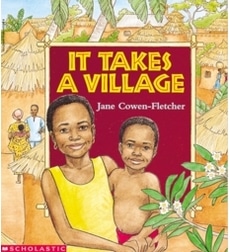Turns Out It Doesn’t Take A Village To Raise A Child, Just A Mother
 Ever since Jane Cowen-Fletcher wrote “It Takes A Village” in 1994, and Hillary Rodham Clinton wrote “It Takes A Village To Raise A Child” a couple of years later, the aphorism has been used to the point of cliche. It’s probably worth noting that this supposed African proverb might not be an actual African proverb. As in, while various African tribes have sentiments that are similar or related to the importance of community in childcare, no tribe has claimed this particular saying.
Ever since Jane Cowen-Fletcher wrote “It Takes A Village” in 1994, and Hillary Rodham Clinton wrote “It Takes A Village To Raise A Child” a couple of years later, the aphorism has been used to the point of cliche. It’s probably worth noting that this supposed African proverb might not be an actual African proverb. As in, while various African tribes have sentiments that are similar or related to the importance of community in childcare, no tribe has claimed this particular saying.
But a University of Michigan researcher says it’s not even true. Beverly Strassman, an evolutionary biologist and professor of anthropology at Michigan’s Institute for Social Research, says “There’s a naïve belief that villages raise children communally, when in reality children are raised by their own families and their survival depends critically on the survival of their mothers.”
Her research was actually testing a couple of theories — one is that a child is more likely to survive if a grandmother lives nearby. The other is that adults may delay their own reproduction to help raise the offspring of others.
Strassman says her 25-year, ongoing study of the Dogan people of Mali in West Africa shows that children are four times more likely to die by age 5 if their mothers are dead. On the other hand, kids were 52 percent less likely to die if their paternal grandparents were dead. Strassman suggests that this is because paternal grandparents are likely to live witht he child and compete for scarce resources.
Strassman also did a study using data from 17 different patrilineal societies in Africa and she found that grandparents living with grandchildren did not have a beneficial effect on the grandchildren’s survival. From the release announcing these studies:
In her study of the Dogon, Strassmann found that children’s risk of death is higher in polygynous than in monogamous families. This reflects the hazard of living with unrelated females whose own children are competing with the children of co-wives for limited resources.
Supporting this finding, Strassmann cites “Hamilton’s Rule,” established by British evolutionary biologist W.D. Hamilton in the 1960s. It is the first formal, mathematical description of kin selection theory, the idea that the degree to which we are willing to invest our resources in another person depends, in part, on the degree of genetic kinship we share with them.
She points out that different societies have different means of success, pointing out the high rate of single mother-led families in the United States, for instance.






